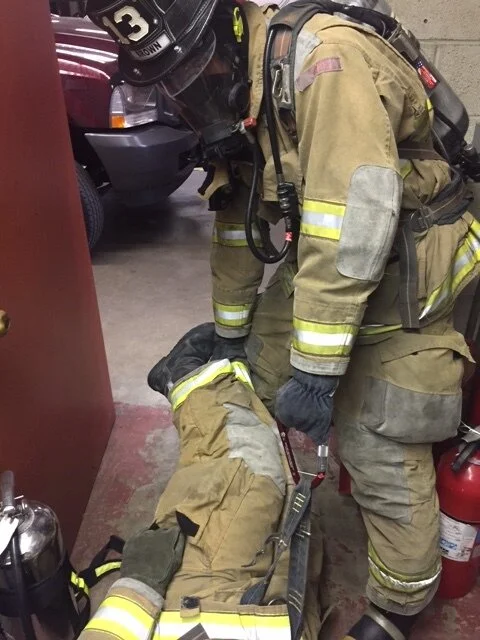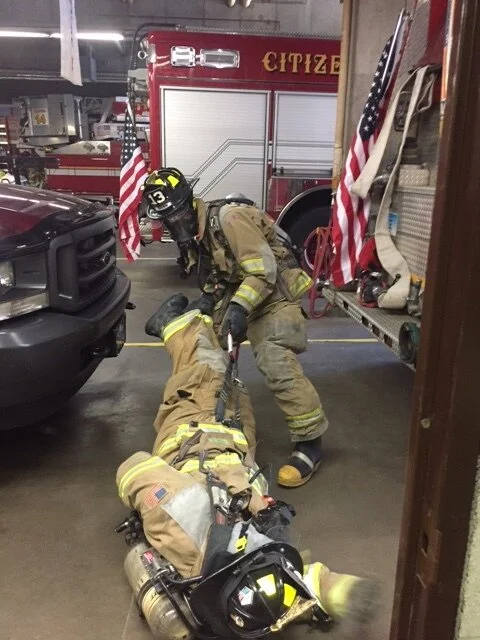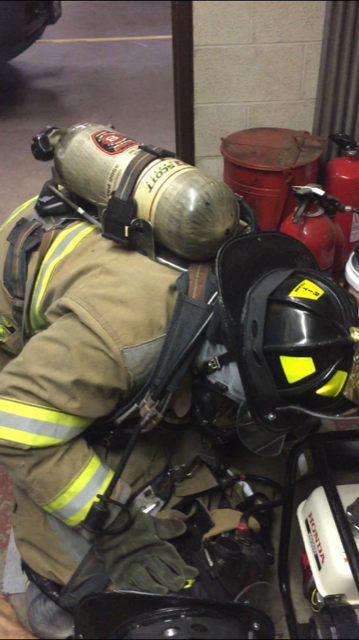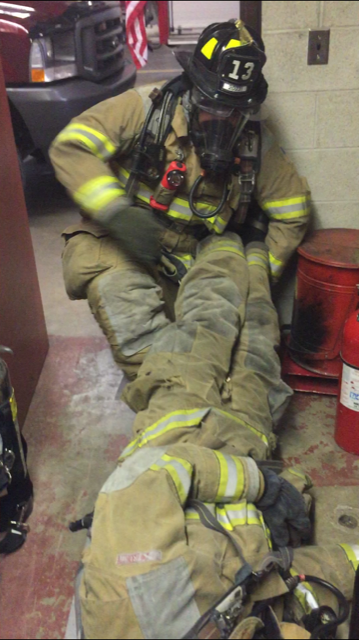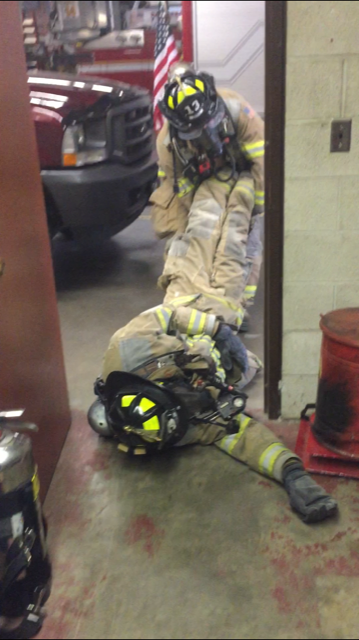The Quick Pick
The time might come when you need to assist another firefighter that has gone down. It may be your partner or a firefighter you come across. We have many ways to move the downed firefighter from the upper part of the body; techniques like converting the SCBA to a drag device or looping some webbing. The difficulty comes in when the downed firefighter is in a position where access to the upper torso is limited, and we do not have the room to move the firefighter.
Before attempting to move the downed firefighter, it is imperative we assess their condition. Are they injured? Can they speak to you? Are they unconscious? Do they have air and are they breathing? The assessment is the top priority before a Mayday is to be given. Once these concerns are addressed and information is relayed out to the incident commander, we can start moving the downed firefighter.
When the firefighter is positioned as seen in the photo to the right, only the feet and legs are accessible. Due to the confined space, we are unable to spin or roll the firefighter over to face head out. Working with the lower half of the body allows us to move the downed firefighter out into an area where we could perform an air pack conversion or loop some webbing and proceed with extrication.
When confronted with this situation we have a few options. If the downed firefighter has an integrated harness or Gemtor harness we can use this to our advantage. First, grab the large carabiner and pull it until it detaches from the securing loops on the bunker pants which puts tension on the hips as well as the upper torso. Next, using your opposite hand, grab the two bottom cuffs of the pants. Lifting the pants gets the legs off the floor creating less friction. Your strength is then used to pull on the large carabiner which drags the upper body out to a desired area.
Grab both pant legs with one hand. Locate the large carabiner and deploy it as your main drag device. Lift the hips off the ground and drag the downed firefighter to a tenable area to do an SCBA conversion or extricate out of the IDLH.
The rescue firefighter leans back and drags the downed firefighter, continuing to hold both the pant legs and the large carabiner.
Many departments can’t afford the integrated harness or another style harness system so this eliminates the ‘quick pick’ option.
Another option is a technique I picked up from Justin McWilliams and the crew at Brothers In Battle.
The crew showed us how to use the Leg Lock option to move the victim or downed firefighter when faced with that confined space issue.
Grab both legs, put the feet under your armpit, lock your arms and lean back as you’re moving the down firefighter. This should keep pressure on the feet and help avoid the legs from sliding out of your grip. You can cross the legs, creating a smaller profile to fit under your arms.
This technique allows you to stand up and utilize your legs as the main muscle group. It also allows you to get the downed firefighter’s hips off the floor and make a quick exit to a tenable area or out of the IDLH environment.
Check air and condition of downed firefighter. Transmit your Mayday. Make sure you supply the IC with good information.
Grab both legs, lock them over the forearm and under the arm pit.
Stand up and lean back using your legs to drag the down firefighter.
Continue dragging the firefighter until you can reach an area of refuge or can exit the IDLH atmosphere.
As stated above, assessing the down firefighter is paramount. Get the Mayday out to the IC and have RIT started to your location.
These two techniques make moving the down firefighter from a confined area to a more tenable area to perform a conversion or out of the IDLH easier for a single firefighter rescue.
The simplicity of the techniques allows this to be a quick drill out on the truck floor with minimal effort of those involved.
Our goal is always getting the down firefighter out as quickly as we can.



